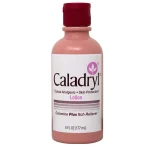Have you ever had a wound that, despite weeks of care, simply refuses to heal? If so, you might have a wound that doesn’t heal, the non healing wound. These wounds, in contrast to ordinary cuts or scrapes, are persistent, difficult to heal, and frequently indicate an underlying medical issue.
The definition, signs, and various treatments of a non-healing wound will all be covered in this guide. This article has all the information you require on non-healing wounds, regardless of whether you are a patient, caregiver, or simply seeking health information.
What is a Non-Healing Wound?
A wound is considered non-healing if it does not heal through the typical phases in the allotted period, which is typically four weeks. Non-healing wounds remain open, enlarge, or do not produce new skin, in contrast to normal wounds that scab over and heal on their own.
Non-Healing Wound Examples
- Diabetic Foot Ulcers: Caused by elevated blood sugar, which hinders healing and decreases circulation
- Venous Leg Ulcers: Occur when blood pools in the lower limbs as a result of inefficient leg veins returning blood to the heart.
- Pressure Ulcers (Bedsores): Arise from continuous pressure on the skin; this is frequently observed in people who are bedridden or immobilized.
- Arterial Ulcers: Result from arterial obstructions that impair blood flow.
These illustrations show how dangerous chronic wounds may be and how important it is to see a doctor for appropriate treatment.
See Also: Swedish Massage vs. Deep Tissue: Which One Should You Choose?
What Causes Non-Healing Wounds?
Numerous underlying medical conditions, lifestyle choices, and even nutritional deficiencies can result in wounds that do not heal.
1. Underlying Medical Conditions
- Diabetes: Blood flow is restricted by high blood sugar, which delays the wound’s delivery of nutrients and oxygen.
- Poor Circulation: Blood cannot reach wound sites due to venous and arterial insufficiencies.
- Infections: A wound infection can hinder the body’s natural healing process by causing pain, edema, and drainage.
- Autoimmune Disorders: The body’s normal healing process is hampered by diseases like lupus and rheumatoid arthritis.
2. Nutritional Deficiencies
- Vitamin C Deficiency: Collagen formation, which is essential for wound healing, depends on vitamin C.
- Zinc Deficiency: Zinc is essential for tissue healing and immunological response.
- Protein Deficiency: The amino acids required for tissue growth and repair are found in protein.
3. Lifestyle Factors
- Smoking: Because nicotine constricts blood vessels, less oxygen reaches the wound.
- Alcohol Consumption: The immune system is weakened by excessive alcohol consumption.
- Obesity: Being overweight increases the risk of non-healing wounds because it decreases blood circulation.
4. Other Causes
- Age: Older folks heal wounds more slowly because their cells regenerate more slowly.
- Medications: Chemotherapy medications and corticosteroids impair immunity and delay tissue healing.
Symptoms of a Non-Healing Wound
You can seek prompt medical assistance if you are aware of the signs of a wound that is not healing. The following are a few of the most typical indicators:
- Persistent Redness and Swelling: This could be a sign of poor circulation or infection.
- Discolored Skin Around the Wound: Necrosis, or tissue death, can cause the skin to turn blue, black, or purple.
- Unusual Discharge: An infection is indicated by a discharge that is yellow, green, or smells bad.
- Pain and Tenderness: A wound that doesn’t heal is frequently indicated by persistent pain surrounding it.
- No Scabbing or New Skin Formation: The wound might be having trouble moving through the stages of natural healing if scabs do not form.
It’s critical to speak with a healthcare professional right away if you observe any of these signs.
See Also: The Power of the Healing Word
Treatment Options for Non-Healing Wounds
It takes more than just a bandage to treat a wound that doesn’t heal. Basic wound care to cutting-edge medical procedures are all examples of effective therapies.
1. Wound Cleaning and Debridement
- Cleaning: To get rid of microorganisms, use antiseptic solutions or sterile saline.
- Debridement: In order to encourage the formation of new tissue, this procedure eliminates diseased or dead tissue.
2. Wound Dressings
- Hydrocolloid Dressings: Create a wet atmosphere to encourage quicker recovery.
- Foam Dressings: Applied to wounds with a lot of discharge.
- Compression Dressings: Boost circulation, particularly in cases of venous leg ulcers.
3. Infection Control
- Antibiotics: Infected wounds are treated with oral or topical antibiotics.
- Antiseptic Solutions: Used to keep things clean and stop bacteria from growing.
4. Advanced Treatments
- Hyperbaric Oxygen Therapy (HBOT): Involves using a pressurized environment to breathe pure oxygen in order to hasten the healing process.
- Skin Grafts: The wound site receives a transplant of healthy skin from another area of the body.
- Growth Factor Therapy: Accelerates the healing of wounds and promotes tissue growth.
How to Prevent Non-Healing Wounds
Taking good care of existing wounds and treating chronic health issues are the first steps in preventing non-healing wounds.
1. Lifestyle Changes
- Quit Smoking: Smoking reduces the amount of oxygen that reaches the wound by narrowing blood vessels.
- Eat a Balanced Diet: To promote healing, eat foods high in protein, zinc, and vitamin C.
2. Manage Health Conditions
- Control Blood Sugar: Keeping blood sugar under control is crucial for diabetics.
- Treat Circulation Problems: Take care of conditions including peripheral artery disease and venous insufficiency.
3. Proper Wound Care
- Clean the Wound Regularly: To avoid infection, use antiseptic solutions.
- Use Moisture-Balanced Dressings: Compared to dry, scabbed wounds, moist wounds heal more quickly.
- Avoid Pressure on the Wound: Cushions or customized mattresses are recommended for people who are bedridden or immobilized.
Conclusion
A wound that doesn’t heal is a dangerous medical problem that needs to be properly treated. Diabetes, infections, malnutrition, or poor circulation can all be the cause. For treatment to be successful, early intervention and appropriate wound care are essential.
See a medical professional if a wound isn’t healed after four weeks. To prevent problems, advanced therapies including debridement, antibiotics, or hyperbaric oxygen therapy can be needed.
You can lower your risk of non-healing wounds by being proactive and managing your blood sugar, eating better, and taking good care of your wounds. To ensure prompt and efficient treatment, get medical help if you or a loved one is suffering from this illness.
Please forward this guide to someone who might find it helpful!
See Also: Best Vitamins for Wound Healing: Speed Up Recovery Naturally
FAQs
What causes non-healing wounds?
Diabetes, poor circulation, infections, dietary deficiencies (such as low zinc or vitamin C), and lifestyle factors like smoking or obesity are the main causes of non-healing wounds.
What is the fastest way to heal a chronic wound?
Cleaning a persistent wound, keeping it wet, and applying cutting-edge therapies like growth factor therapy or hyperbaric oxygen therapy are the quickest ways to heal it. Infection prevention and healthy eating are also crucial.
What to do if a wound is not healing?
Consult a medical professional if a wound hasn’t healed after four weeks. They might suggest sophisticated procedures like skin grafts or HBOT, debridement, or infection control.
4. What deficiency causes wounds not to heal?
Protein, zinc, and vitamin C deficiencies impede the healing of wounds. Zinc promotes tissue regeneration and the immune system, whereas vitamin C is essential for the synthesis of collagen.
5. Can a non-healing wound be a sign of cancer?
In rare instances, a persistent wound that doesn’t go away could indicate squamous cell carcinoma or another type of skin cancer. If the size, color, or shape of a wound changes, get medical help right once.











